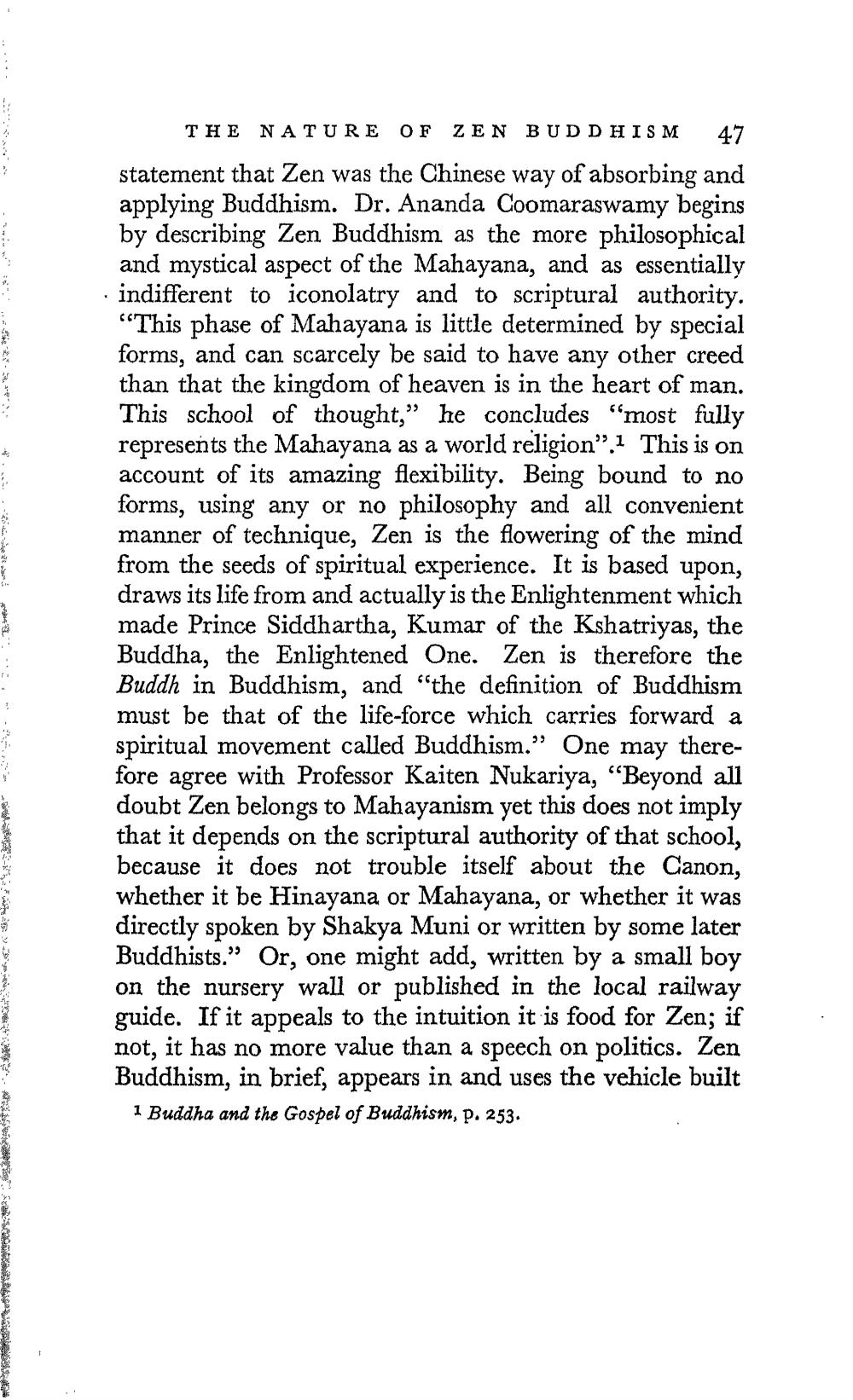________________
THE NATURE OF ZEN BUDDHISM 47 statement that Zen was the Chinese way of absorbing and applying Buddhism. Dr. Ananda Coomaraswamy begins by describing Zen Buddhism as the more philosophical and mystical aspect of the Mahayana, and as essentially · indifferent to iconolatry and to scriptural authority. “This phase of Mahayana is little determined by special forms, and can scarcely be said to have any other creed than that the kingdom of heaven is in the heart of man. This school of thought," he concludes "most fully represents the Mahayana as a world religion".1 This is on account of its amazing flexibility. Being bound to no forms, using any or no philosophy and all convenient manner of technique, Zen is the flowering of the mind from the seeds of spiritual experience. It is based upon, draws its life from and actually is the Enlightenment which made Prince Siddhartha, Kumar of the Kshatriyas, the Buddha, the Enlightened One. Zen is therefore the Buddh in Buddhism, and “the definition of Buddhism must be that of the life-force which carries forward a spiritual movement called Buddhism.” One may therefore agree with Professor Kaiten Nukariya, "Beyond all doubt Zen belongs to Mahayanism yet this does not imply that it depends on the scriptural authority of that school, because it does not trouble itself about the Canon, whether it be Hinayana or Mahayana, or whether it was directly spoken by Shakya Muni or written by some later Buddhists." Or, one might add, written by a small boy on the nursery wall or published in the local railway guide. If it appeals to the intuition it is food for Zen; if not, it has no more value than a speech on politics. Zen Buddhism, in brief, appears in and uses the vehicle built 1 Buddha and the Gospel of Buddhism, p. 253.




